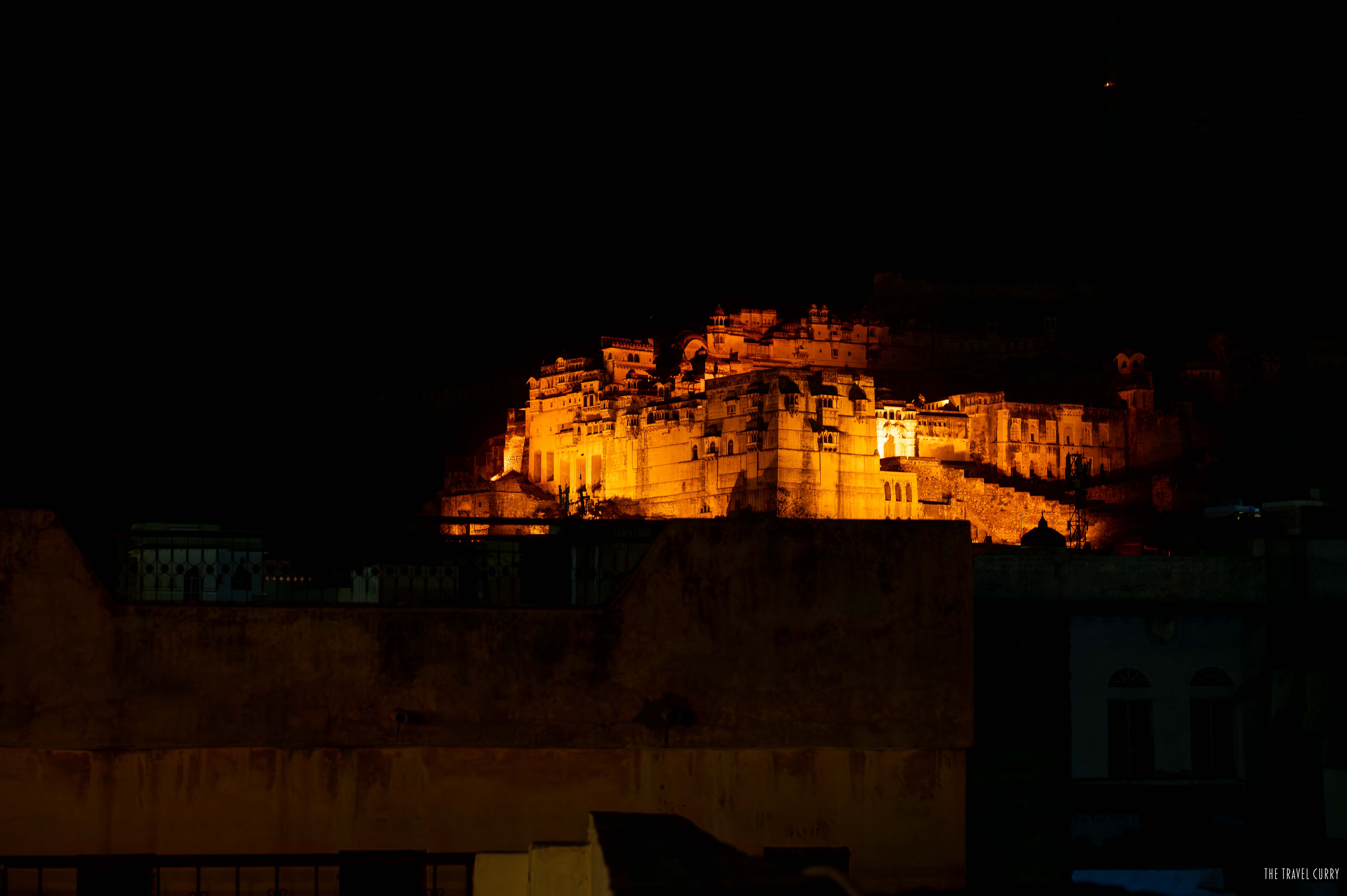
Perched on a rugged hillside overlooking the quaint town of Bundi in Rajasthan, stands the formidable Taragarh Fort of Bundi. Also known as the Bundi Fort, this majestic fortress is a testament to the rich cultural heritage of the region. Though in ruins now, Bundi Fort transports you back to an era of intrigue and opulence. Here is what you can expect to see in Taragarh Fort Bundi, entry fee, timings, the rules, and relics of the lost heritage.
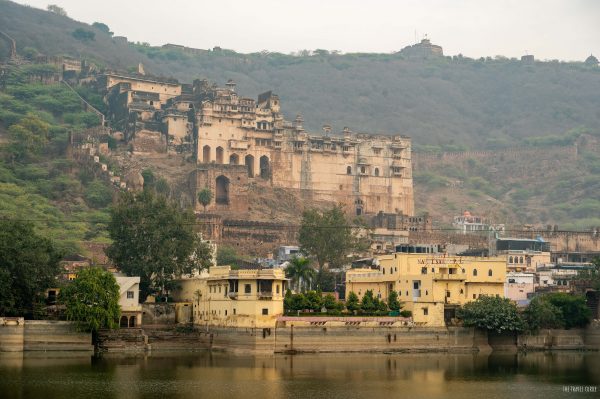
History of Taragarh Fort Bundi
Rao Deva Hada, a Chauhan Rajput ruler of Bundi commissioned the Taragarh Fort in 1298 AD. Its strategic location atop a steep hill provided a vantage point for overseeing the surrounding plains and safeguarding the kingdom against potential invasions. Later, over the centuries, the fort underwent several expansions and renovations under the successive rulers of Bundi, including Rao Raja Bahadur Singh and Rao Raja Ishwari Singh.
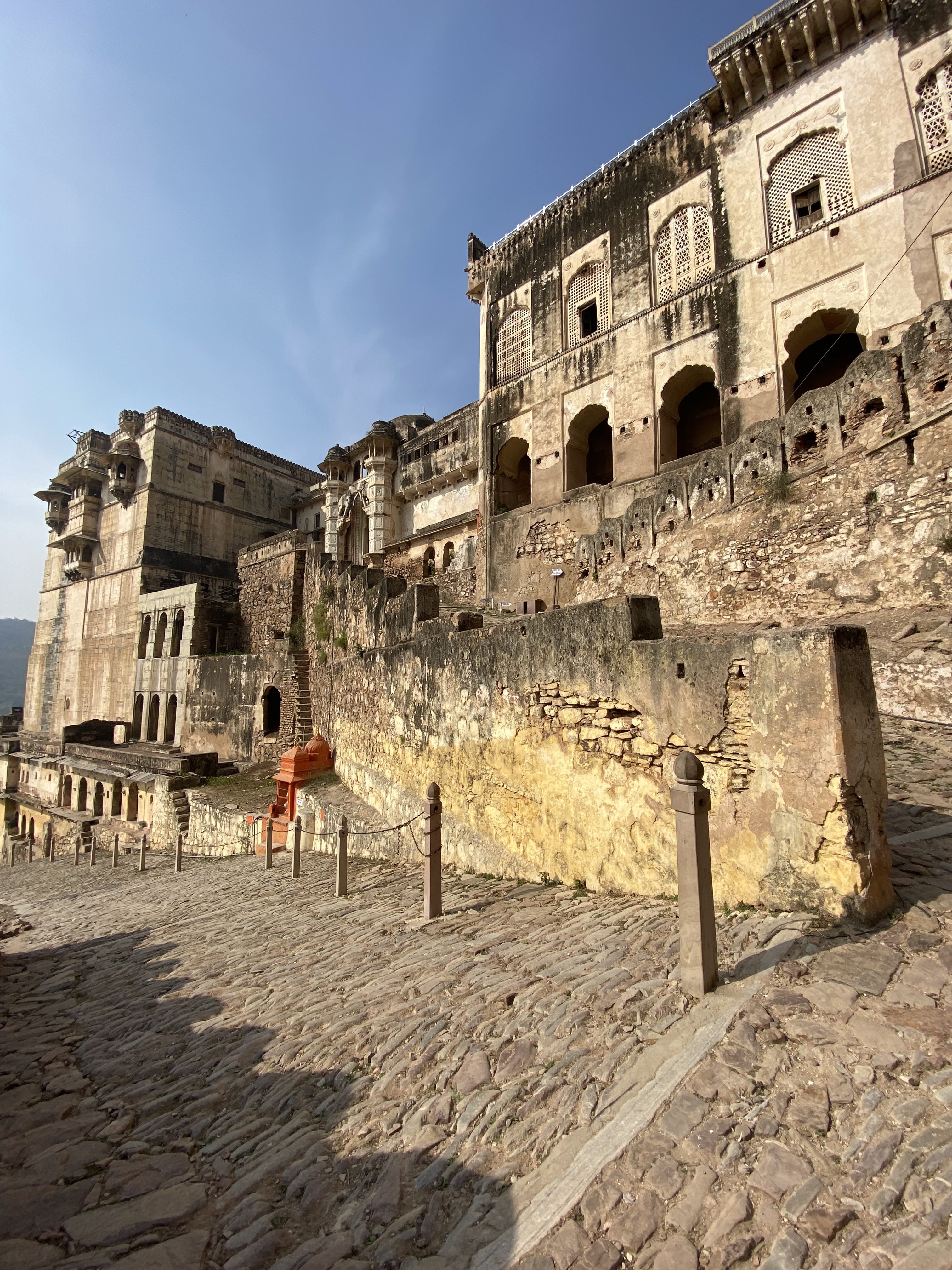
Unlike other forts of Rajasthan, this one has little Mughal influence in the architecture. While most of the forts are built of sandstone, Taragarh Fort Bundi is made of green-tinged stone found locally in Bundi. Since this is an extremely hard type of stone, the rulers of the fort decided not to toil with carvings on the stone. They chose to make paintings on the walls which are the remaining marvels in the fort.
What To Explore Inside Taragarh Fort
The Palaces and Passages
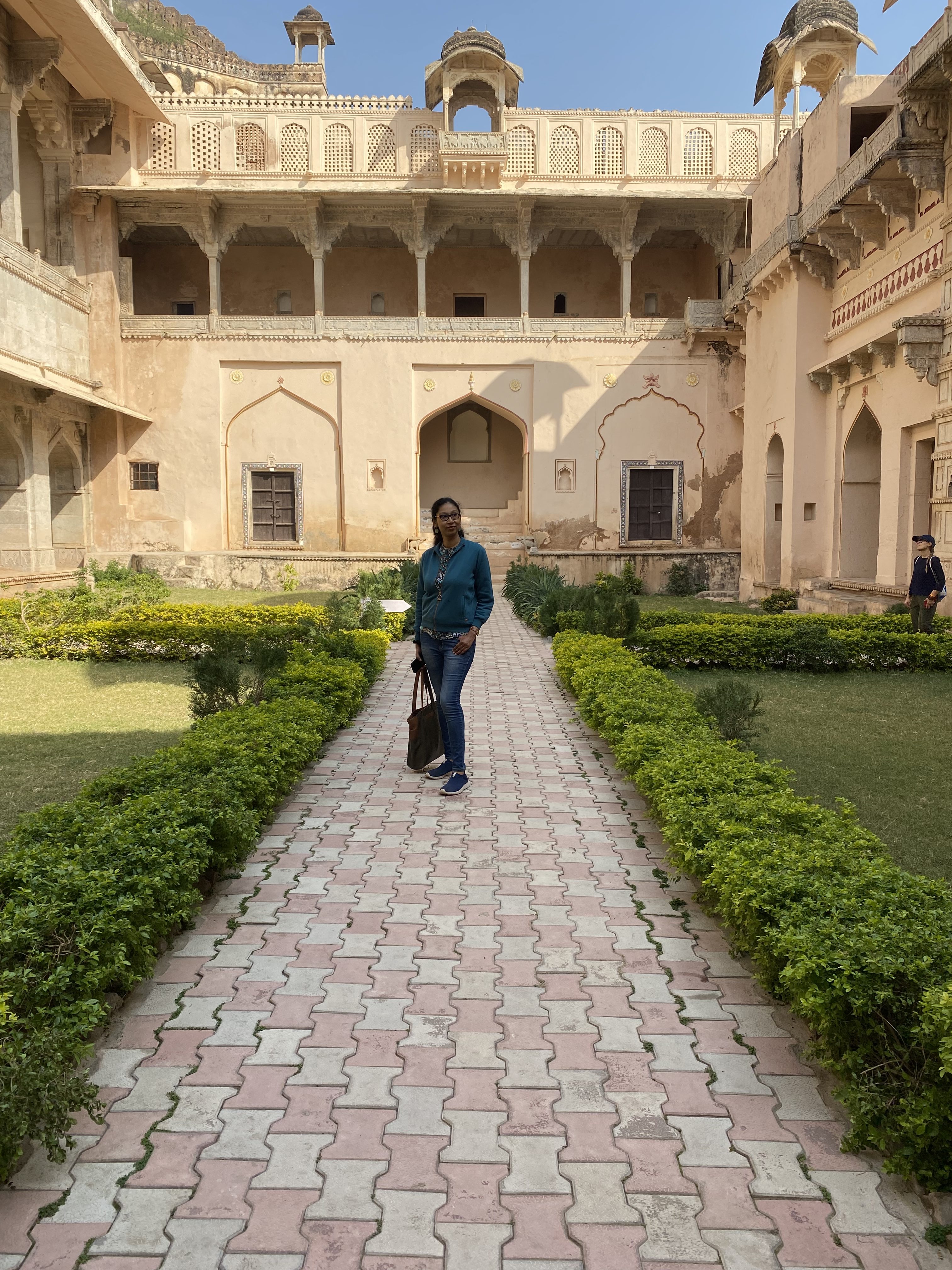
One of the most striking features of Taragarh Fort is its impressive architecture, characterized by massive ramparts, imposing gateways, and intricately carved palaces. The fort is adorned with several beautiful palaces, including the Rani Mahal, or Queen’s Palace, which once served as the residence of the royal ladies. The palace boasts exquisite frescoes, intricate mirror work, and ornate ceilings, offering a glimpse into the luxurious lifestyle of the Bundi royalty.
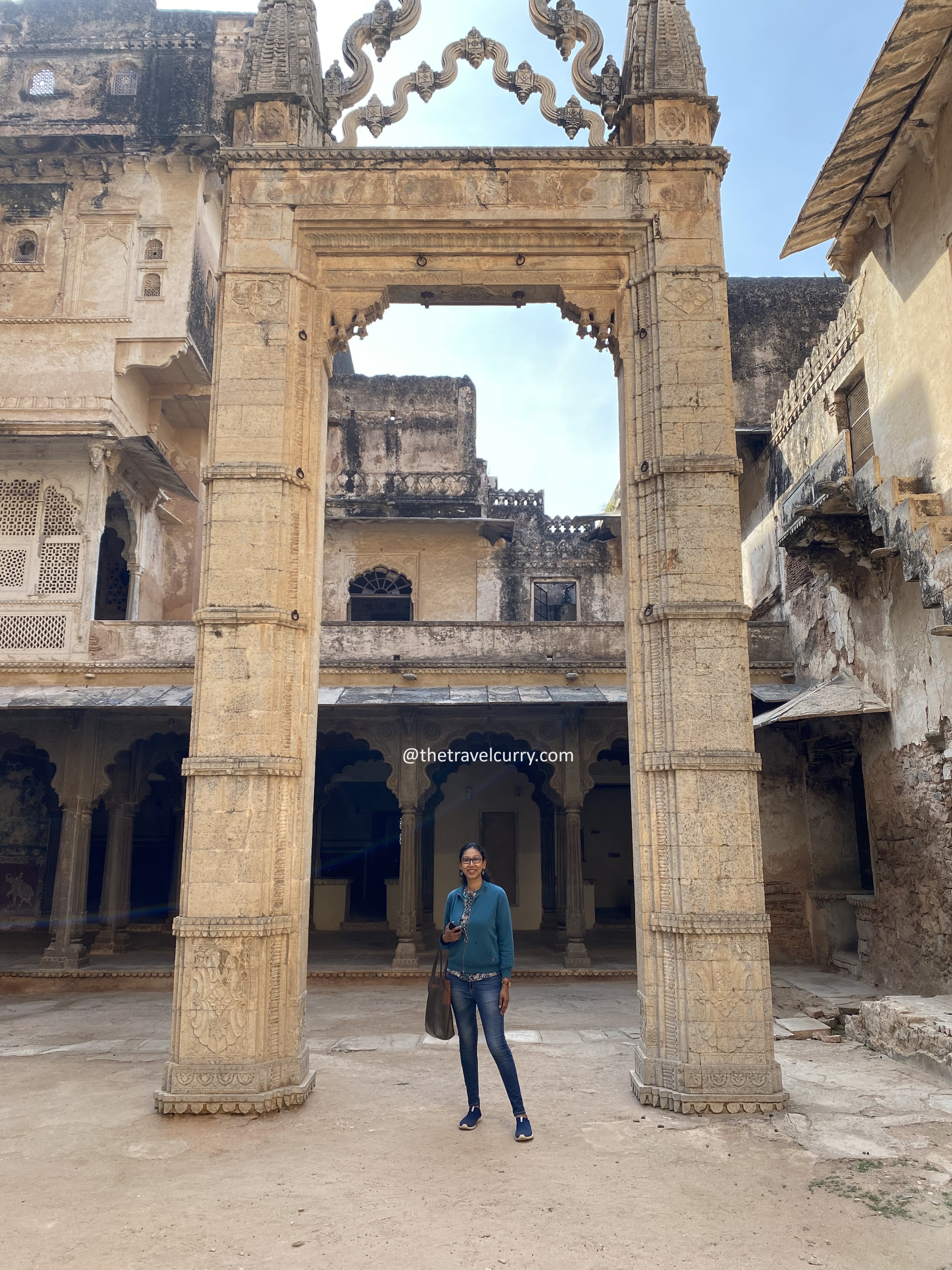
Phool Mahal is another beautiful palace that has walls adorned with mirrorwork and paintings. However, entry inside the mahal is restricted. Hence, you can tour the alley. However, from the connecting balcony, you get a beautiful view of Nawal Sagar Lake and a part of Bundi City.
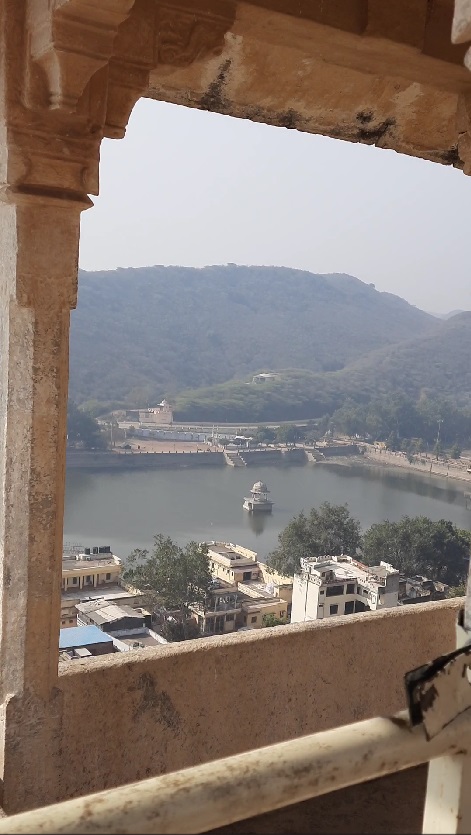
As you wander through the labyrinthine passages of the fort, you encounter a series of majestic gates, each with unique design and historical significance. The Hathia Pol, or Elephant Gate, adorned with elephant sculptures, served as the main entrance to the fort and was once used for ceremonial processions. The Suraj Pol, or Sun Gate, is another notable gateway, named after the sun deity and adorned with beautiful carvings depicting the sun and other celestial motifs.
Bundi Fort Wall
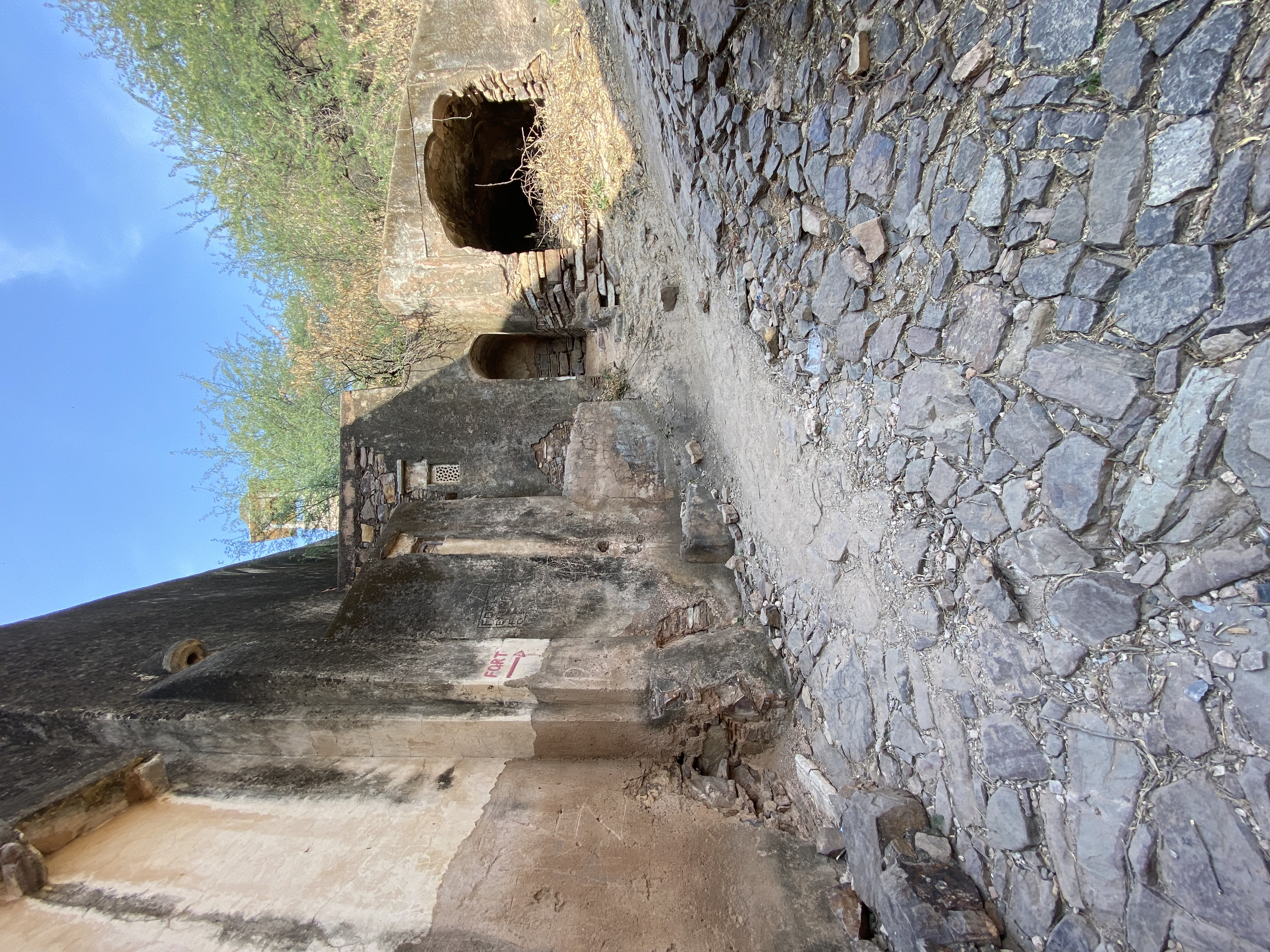
The long boundary wall of Taragarh Fort leads to a tedious trek on a rough, unkempt path, often frequented by monkeys. The fort wall surrounds the whole town of Bundi. However, honestly, we found the path unsafe and returned after hiking for a bit. The silence and dismantled fort structure added an eeriness to the place. Nonetheless, the peak points along the wall will show you a panoramic view of Bundi city. But if you enjoy solitude and are not scared of adventure in the wilderness, go on and explore the less visited part of Taragarh Fort. Make sure you carry a stick to scare the monkeys and enough water.
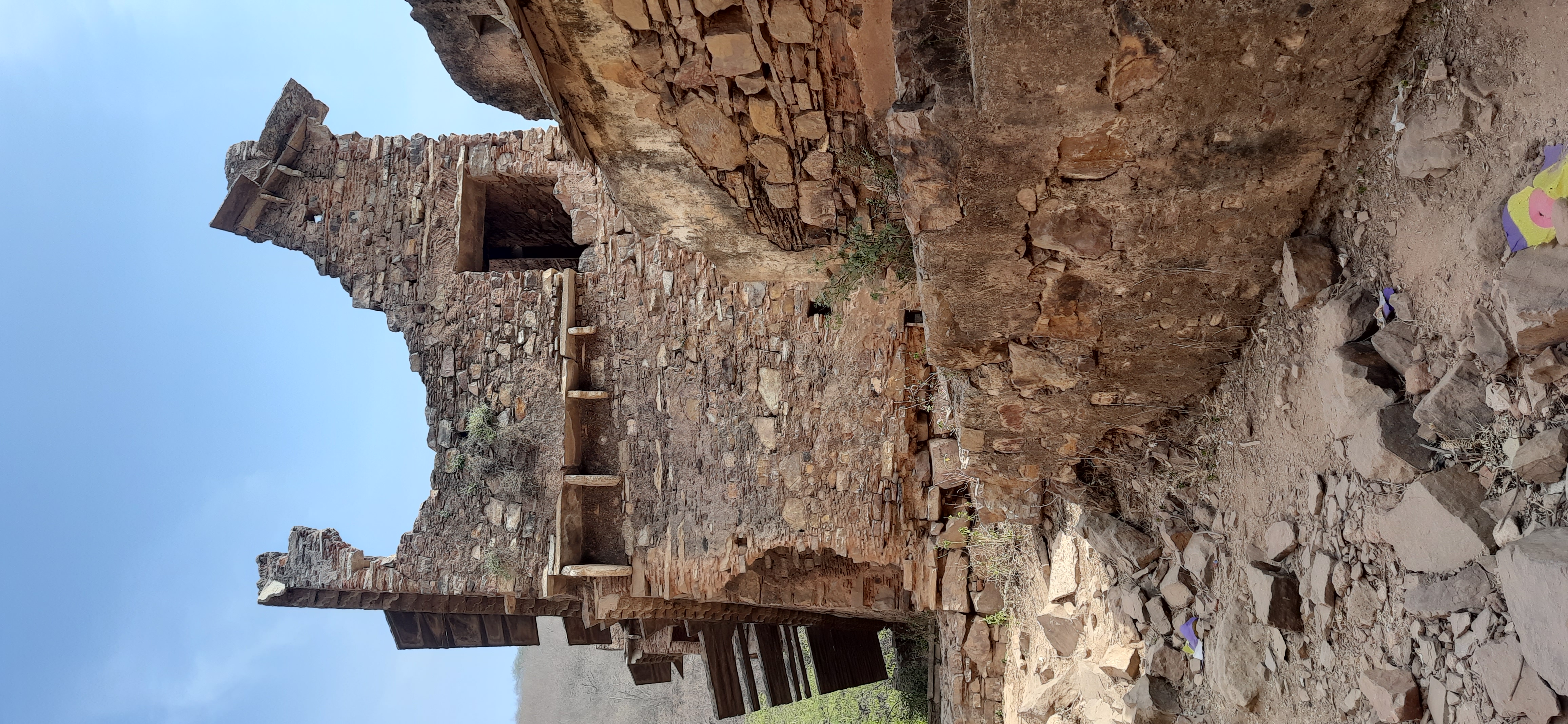
Chitrashala – The Art Gallery in Bundi Fort
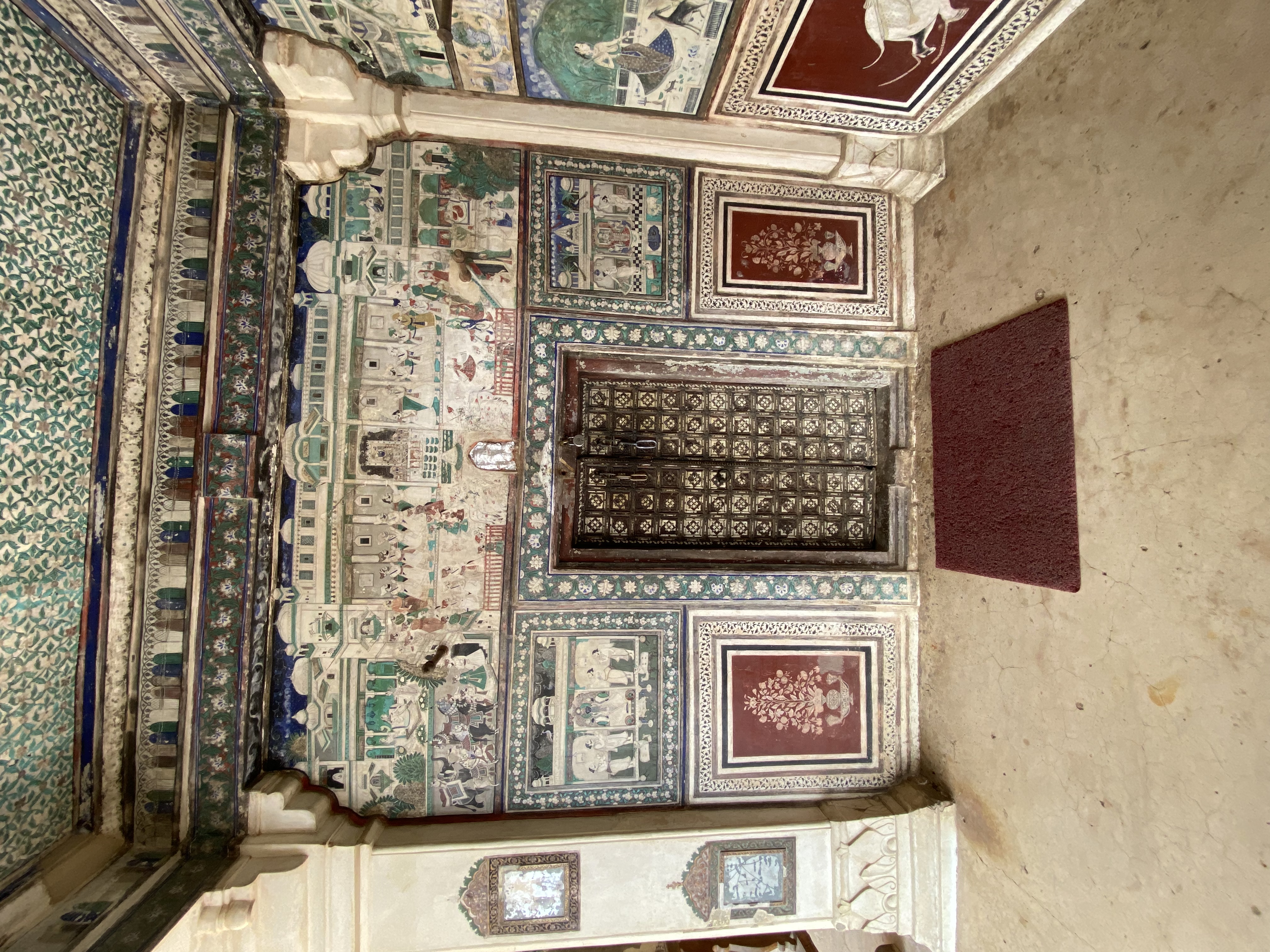
The only place maintained in Taragarh Fort is Chitrashala. I wonder how did ASI manage to take it under its wing. Moving further, you would see the ornate gallery adorned with exquisite frescoes. They depict scenes from Hindu mythology, battles, and royal processions. Commissioned by Rao Raja Umed Singh in the 18th century, the Chitrashala serves as a visual chronicle of Bundi’s rich artistic heritage and is revered as a masterpiece of Rajput paintings.
Unlike the rest of the fort, which lies in a state of neglect and disrepair, Chitrashala stands as a shining example of conservation efforts aimed at safeguarding India’s cultural legacy. Though a lot of work still remains to preserve the murals and wall paintings, it is in a far better condition than the entire fort. We sincerely hope the priceless artwork remains intact for future generations to admire.
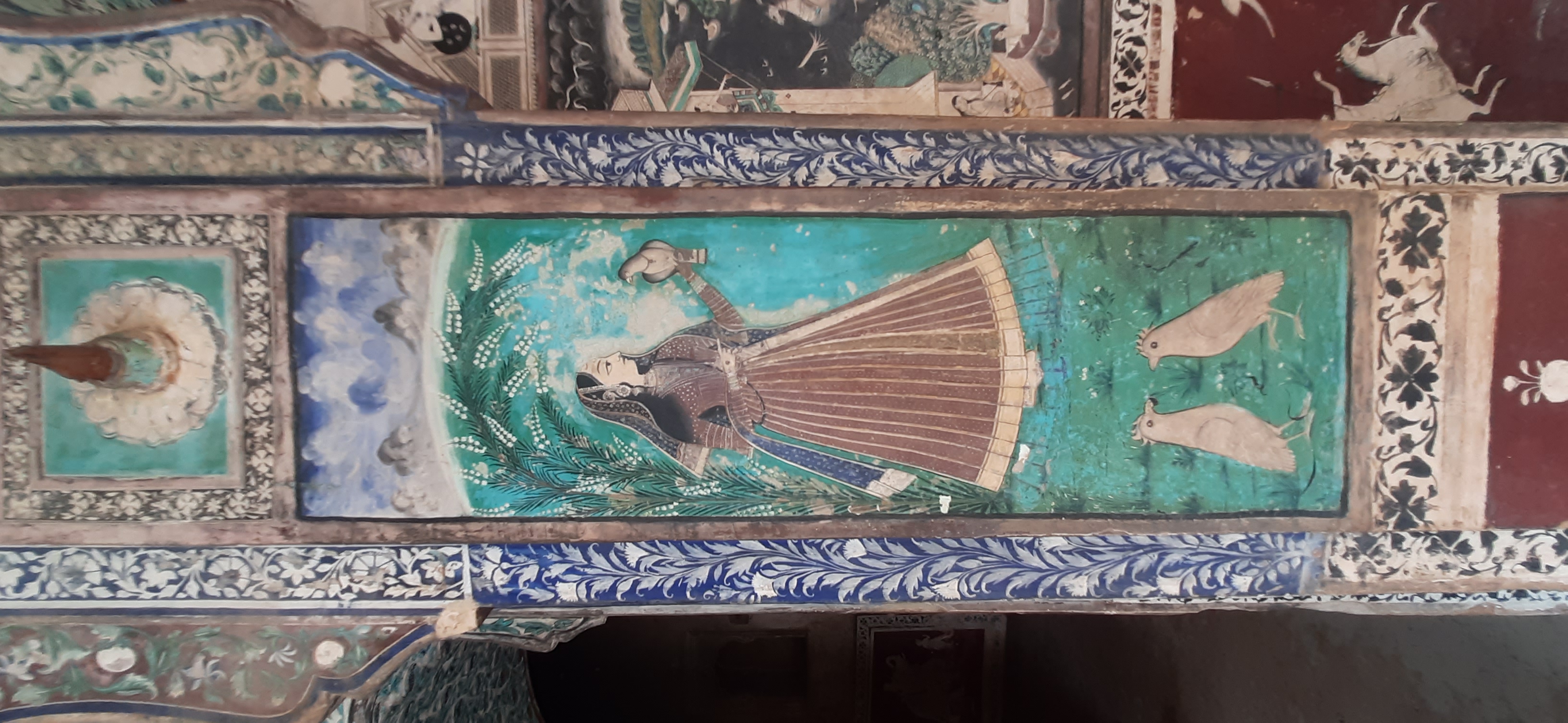
Important Tips While Visiting Taragarh Fort Bundi
- The best time to visit Bundi Fort is early morning before the noon sun gets too harsh.
- Taragarh Fort opens at 9 am and closes at 6 pm.
- Bundi Fort is not wheelchair friendly and involves a lot of hiking/walking.
- The fort has no provision for drinking water. So please carry enough water with you.
- Also, apply good sunscreen and carry sunglasses, a hat/cap/scarf to protect yourself from the heat.
- Entry fee to Taragarh Fort- Rs 100 for Indians and Rs 600 for Foreign Nationals. The ticket is valid for 4 hours only.
- Charges for photography– Rs 500 for DSLR/Point and Shoot camera. But mobile photography is free of cost. Also, drones and tripods are strictly prohibited.
- The management does not appreciate filming videos or making reel content in Chitrashala. Hence the guard shouts and scolds you if he catches you making videos. (There are no rules that prohibit you from making videos. I guess they do it to keep the sanctity of the place).
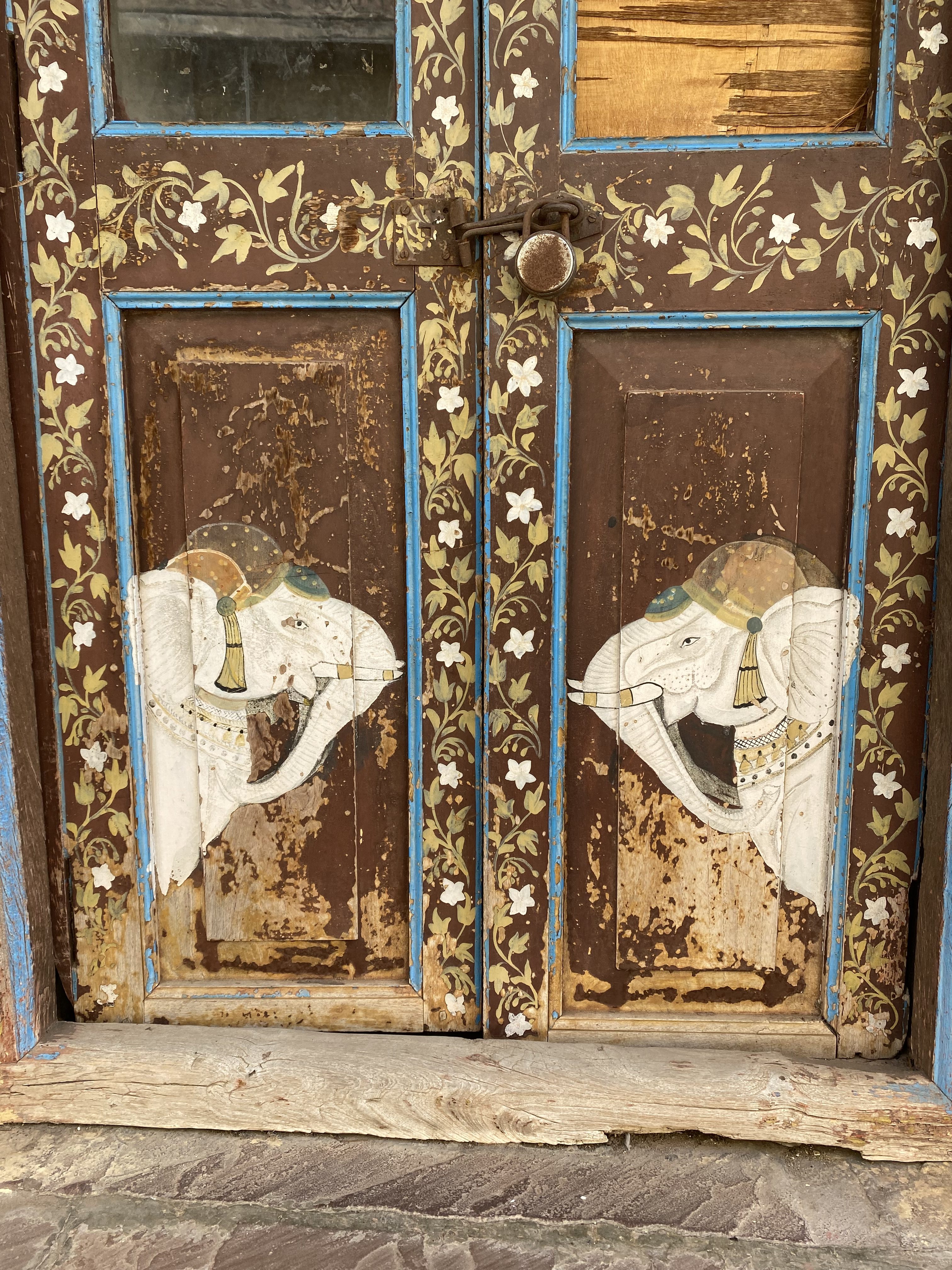
Plan Your Visit To Bundi
The best time to visit Bundi is from October to March when the weather is more conducive. We visited in January and it had already grown hot then.
How To Reach Bundi
By Road– Bundi is 38 km from Kota, 229 from Jaipur, 385 from Sanchi & Udayagiri. The best way to reach Bundi is by driving. Instead of driving 436 km from Gurugram, we divided the journey into three parts. Here is the breakup of our journey- Gurugram to Tonk (two nights), Tonk to Udayagiri (two nights), Udayagiri to Bundi (three nights), and back to Gurugram.
By Train- Bundi Railway station connects with major cities of India including Rajasthan, UP, and MP. So please check the timetable and connecting stations here.
By Air– The nearest airport to Bundi is in Jaipur located 206 km away. You can complete your onward journey in a taxi or connecting bus.
Taragarh Fort Bundi – An overview
Taragarh Fort is a timeless symbol of Bundi’s glorious past, beckoning travelers from far and wide to immerse themselves in its storied legacy. From its towering ramparts to its intricately carved palaces, every corner of the fort whispers tales of valor, romance, and intrigue. And amidst the ruins, the Chitrashala shines as a beacon of artistic excellence, preserving the essence of a bygone era for the coming generations. Visit the crumbling fort before it disappears into folklore and history books.
